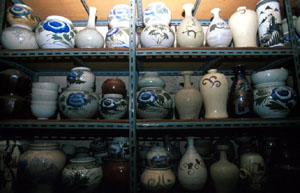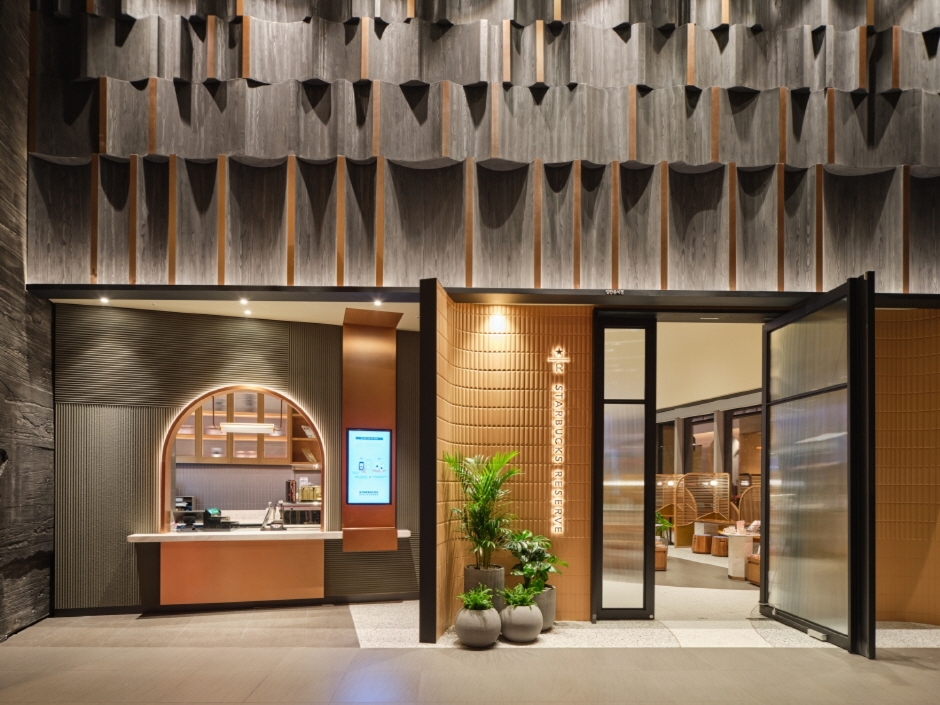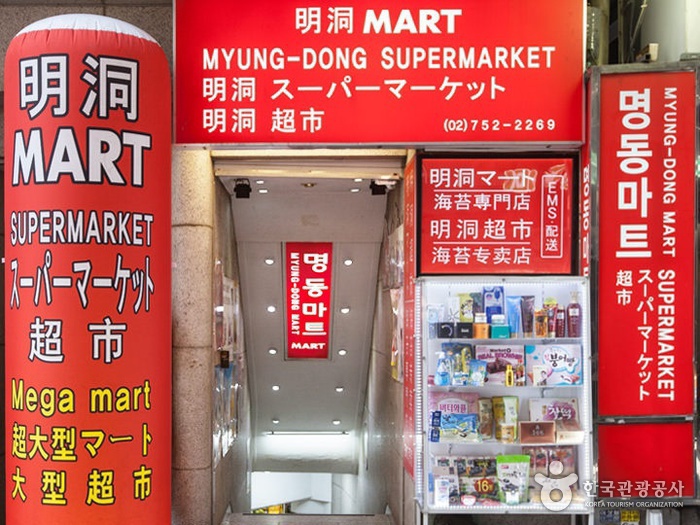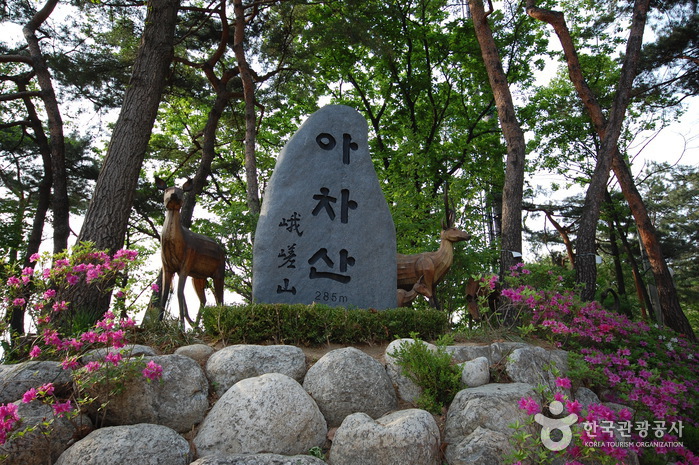Hwanghak-dong Flea Market (Dokkaebi Market / Manmul Market) (황학동 벼룩시장 (도깨비시장/만물시장))
10.8Km 2025-04-11
11-7 Majang-ro 5-gil, Jung-gu, Seoul
Hwanghak-dong Flea Market was named after the way how merchants travel from one place to another all over the country, as if like fleas hopping around from one spot to another, to collect rare and valuable items. This market was once a haven of antiques and collectibles, but with the formation of old-fashioned art street in 1983 in Janganpyeong, many classic art shops had moved out, leaving only used item and general goods stores. Now, visitors can find stores selling antiques, used furniture, electronics, clocks, jewelry, musical instruments, camera, and machinery – pretty much anything one can name. Hwanghak-dong Flea Market is also referred to as Dokkaebbi Market, to describe how even the most rundown items become just like new, as if like the work of a dokkaebi (Korean folk goblin).
Samgyeopsal Jeonmunjeom Daetongnyeong (삼겹살전문점대통령)
10.8Km 2024-03-11
249-24, Jangchungdan-ro, Jung-gu, Seoul
+82-2-2277-2276
This restaurant offers grilled pork that has been aged in bamboo tubes, a process that tenderizes the meat and removes any gamey odor from the Samgyeopsal (Grilled pork belly). The meat is served with kimchi, vegetable wraps, and side dishes. Kkotgedoenjangjjigae (Blue crab soybean paste jjigae) and Naengmyeon (Cold buckwheat noodles) also pair well with the pork. This establishment is an excellent choice for enjoying Samgyeopsal (Grilled pork belly) at affordable prices.
Tonymoly - Dongdaemun Branch [Tax Refund Shop] (토니모리 동대문)
10.8Km 2024-04-18
257, Jangchungdan-ro, Jung-gu, Seoul
-
Starbucks Byuldabang (스타벅스 별다방)
10.8Km 2024-12-27
100 Toegye-ro, Jung-gu, Seoul
Byuldabang is a cozy space in the city, where the present and future of Starbucks coexist
Byuldabang is a special name. It combines the Korean words byul, which means stars, and dabang, which means a traditional space where people gather and talk over tea or drink. Byuldabang is the nickname Koreans generally use for Starbucks. Starbucks Byuldabang store opened in appreciation of customers of Starbucks Korea, celebrating its 22nd anniversary. This particular store is a Starbucks Reserve store with new concept food items, and is the first among Starbucks stores worldwide to have digital art wall decorations. The images projected to the art wall are “The Journey of Siren.” It is a surreal journey of Siren, who delivers coffee messages around the ocean, day and night. Customers love the story.
Harmony Mart Myeong-dong Station Branch (하모니마트 명동역점)
10.8Km 2024-12-23
58 , Myeongdong 10-gil, Jung-gu, Seoul
+82-2-752-2269
Harmony Mart Myeongdong Station Branch is a discount supermarket specializing in Korean products popular with foreign tourists. It’s on the 1st basement floor of the Shinil Building annex, just a minute's walk from Exit 8 of Myeongdong Subway Station, Jungu, Seoul. Shop here for kimchi, seaweed, ginseng products, tea, ramen, handicrafts, daily necessities and souvenirs. English, Chinese, and Japanese are spoken, and payments can be made in yen and yuan. With purchases of KRW 50,000 or more, there’s free delivery to accomodations within a 5km radius.
Myeong-dong Mart - Myeong-dong Branch [Tax Refund Shop] (명동마트 명동)
10.8Km 2024-04-18
B1F, 58, Myeongdong 10-gil, Jung-gu, Seoul
-
Reberry Clinic Myeongdong (리베리의원 명동점)
10.8Km 2025-11-28
#201, 2nd Floor & #301, 3rd Floor, 58 Myeongdong 10-gil, Jung-gu, Seoul
1. A dedicated medical director is personally assigned to each client, ensuring responsible and individualized care.
2. We go beyond consultation — every session is a professional medical treatment.
3. With our LifeBiz AI-powered 3D analysis camera, we provide an objective and precise facial assessment.
4. Our treatments are guided by a scientific skin-type classification system for accurate and tailored results.
5. Through 3D facial analysis, pigmentation diagnosis, and skin-type classification, we design a fully customized treatment pathway.
6. At Libery Clinic Aesthetic, we offer not only advanced medical procedures, but also warm décolleté and therapeutic massage care for a holistic experience.
Lf Hazzys - Myeong-dong [Tax Refund Shop] (LF(명동헤지스종합))
10.8Km 2024-04-19
28, Myeongdong 8ga-gil, Jung-gu, Seoul
-
Achasanseong Fortress (아차산성)
10.8Km 2023-04-05
Gwangjang-dong, Gwangjin-gu, Seoul-si
+82-2-450-7593
Achasanseongseong Fortress boasts magnificent views of the Hangang River and skyline. The 200m-high mountain fortress wall was built to face southeast, towards the Hangang River. It is also called Janghan-seong or Gwangjang-seong. A fierce battle was once fought here among Gogury, Baekje and Silla because of its strategic location during the period of the Three Kingdoms. King Gae-Ro of Baekje (r. 455-475) died in the war by the Goguryeo forces sent by King Jang-Su (r. 413-491) and General Ondal of Goguryeo was also killed in a battle with the Silla army in 590.
Achasan Mountain is popular as a citizens’ resting place with a historical trail and a natural park including various facilities such as walkway, mountain walkway, a badminton court, a wrestling range, an archery range, various amusement facilities for children, benches, and pavilion.

![Saeki P&C [Tax Refund Shop] (세기피앤씨)](http://tong.visitkorea.or.kr/cms/resource/68/2878668_image2_1.jpg)



![Myeong-dong Mart - Myeong-dong Branch [Tax Refund Shop] (명동마트 명동)](http://tong.visitkorea.or.kr/cms/resource/30/2878630_image2_1.jpg)
![Lf Hazzys - Myeong-dong [Tax Refund Shop] (LF(명동헤지스종합))](http://tong.visitkorea.or.kr/cms/resource/55/2878655_image2_1.jpg)

 English
English
 한국어
한국어 日本語
日本語 中文(简体)
中文(简体) Deutsch
Deutsch Français
Français Español
Español Русский
Русский